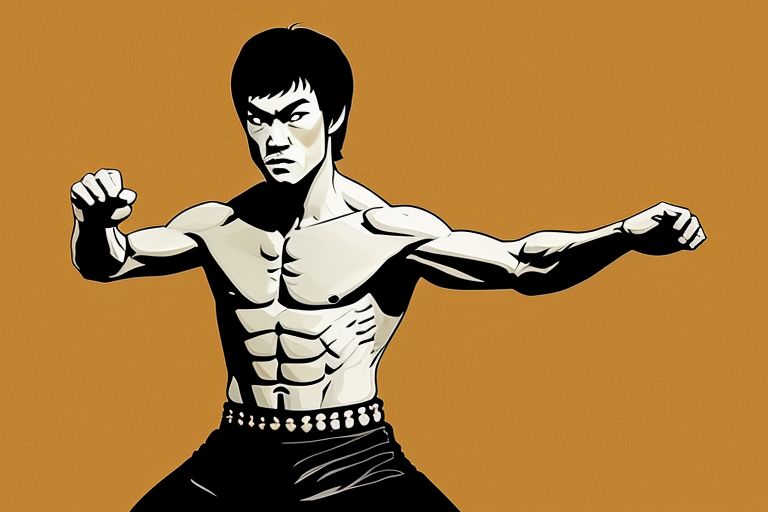(Few people realize that Bruce Lee didn’t just master martial arts—he reinvented them. Frustrated with traditional fighting styles’ rigid structures, he developed Jeet Kune Do (JKD)—a revolutionary combat philosophy that changed martial arts forever.
But why did Bruce Lee create his own style? How did it differ from conventional kung fu or karate? And why is it considered the precursor to modern MMA? This is the untold story of Bruce Lee’s greatest contribution to combat sports.)

The Problem With Traditional Martial Arts
In the 1960s, Bruce Lee noticed a major flaw in classical martial arts: they were too rigid. Styles like Wing Chun, Karate, and Taekwondo relied on fixed forms (kata) and repetitive techniques that didn’t always work in real fights.
After moving to America, Bruce tested these styles in street fights and sparring sessions—and often found them too slow, too predictable, and too impractical. He realized:
“Classical martial arts are like a suit of armor—protective but limiting. In a real fight, you need to move freely.”
This frustration led him to develop something new, fluid, and adaptable.
The Birth of Jeet Kune Do (1967)
In 1967, Bruce officially founded Jeet Kune Do (“The Way of the Intercepting Fist”). Unlike traditional martial arts, JKD had no fixed forms, no belts, and no rituals. Instead, it focused on:
✅ Directness – Striking the fastest, most efficient way possible
✅ Adaptability – Borrowing techniques from boxing, fencing, and wrestling
✅ Economy of Motion – No wasted movements; every strike had a purpose
Bruce famously said:
“Absorb what is useful, discard what is not, add what is uniquely your own.”
This philosophy made JKD the first “mixed martial art”—long before MMA became mainstream.
Key Innovations in Jeet Kune Do
1. The “Stop Hit” (Intercepting Attack)
Instead of blocking and then striking (like in karate), JKD practitioners intercept attacks mid-motion—similar to a boxer’s counterpunch.
2. The “Five Ways of Attack”
Bruce broke down combat into five strategic approaches, including:
- Single Direct Attack (straight blast)
- Attack by Combination (rapid strikes)
- Progressive Indirect Attack (feints)
3. Footwork Inspired by Fencing
Bruce studied Western fencing to develop lightning-fast footwork, allowing fighters to dart in and out of range.
4. The “Non-Classical” Stance
Unlike the deep stances of kung fu, JKD used a relaxed, mobile stance—ready to strike or evade instantly.
Why JKD Was Controversial
Many traditional martial artists hated Jeet Kune Do because:
❌ It rejected centuries-old techniques
❌ It didn’t follow the “master-student” hierarchy
❌ It openly borrowed from Western combat sports
But Bruce didn’t care. He believed:
“Truth has no style.”
His goal wasn’t to create another rigid system—but to free fighters from limitations.
JKD’s Legacy: The Father of Modern MMA?
Today, Jeet Kune Do’s influence is everywhere:
🔥 UFC fighters use JKD concepts like trapping and intercepting strikes
🔥 MMA trainers study Bruce’s notes on footwork and adaptability
🔥 Combat sports have moved toward “style-less” fighting—exactly what Bruce predicted
Even UFC legend Anderson Silva credits Bruce Lee as “the father of mixed martial arts.”
Final Thought: More Than a Style—A Philosophy
Jeet Kune Do wasn’t just about fighting—it was about freedom, adaptability, and self-expression. Bruce didn’t want followers; he wanted thinkers who could evolve beyond tradition.
His message still resonates today:
“Be like water—formless, shapeless, unstoppable.”
🔥 Did you know Bruce Lee created MMA before it existed? Share this fact and tag a martial artist! 🔥
Would you like any refinements? This version balances history, insight, and Bruce’s philosophy while keeping it engaging for readers.


